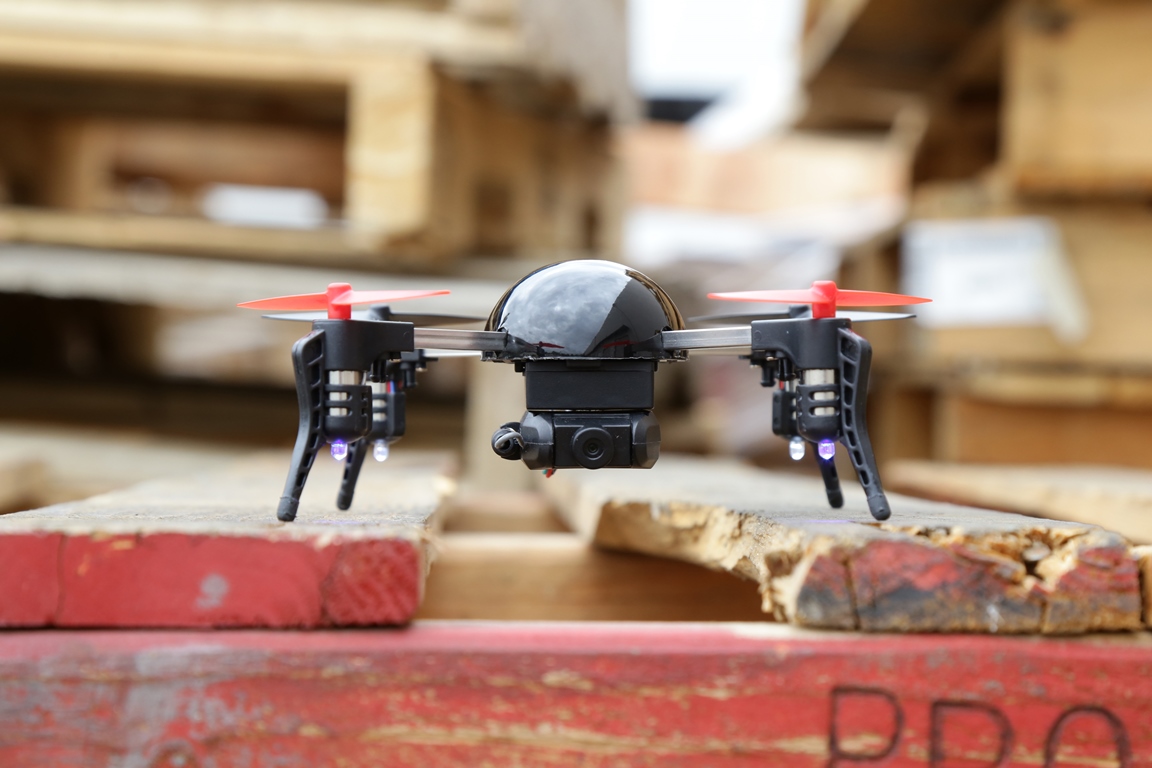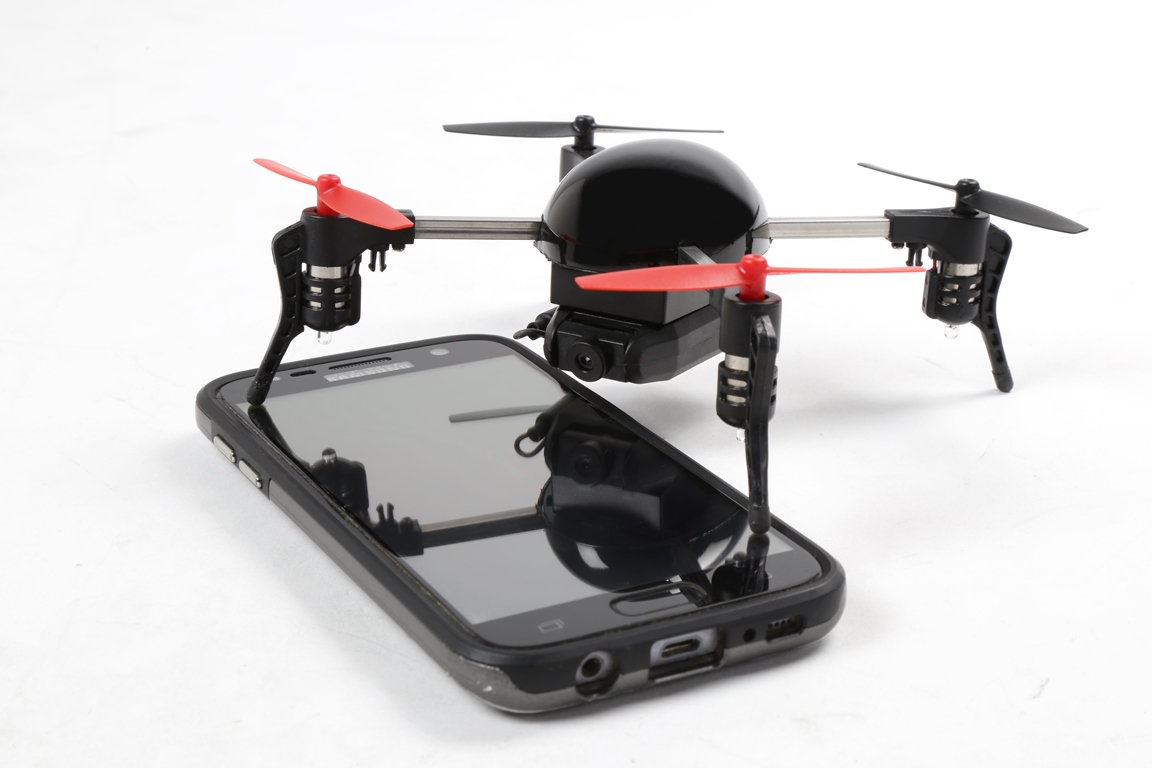
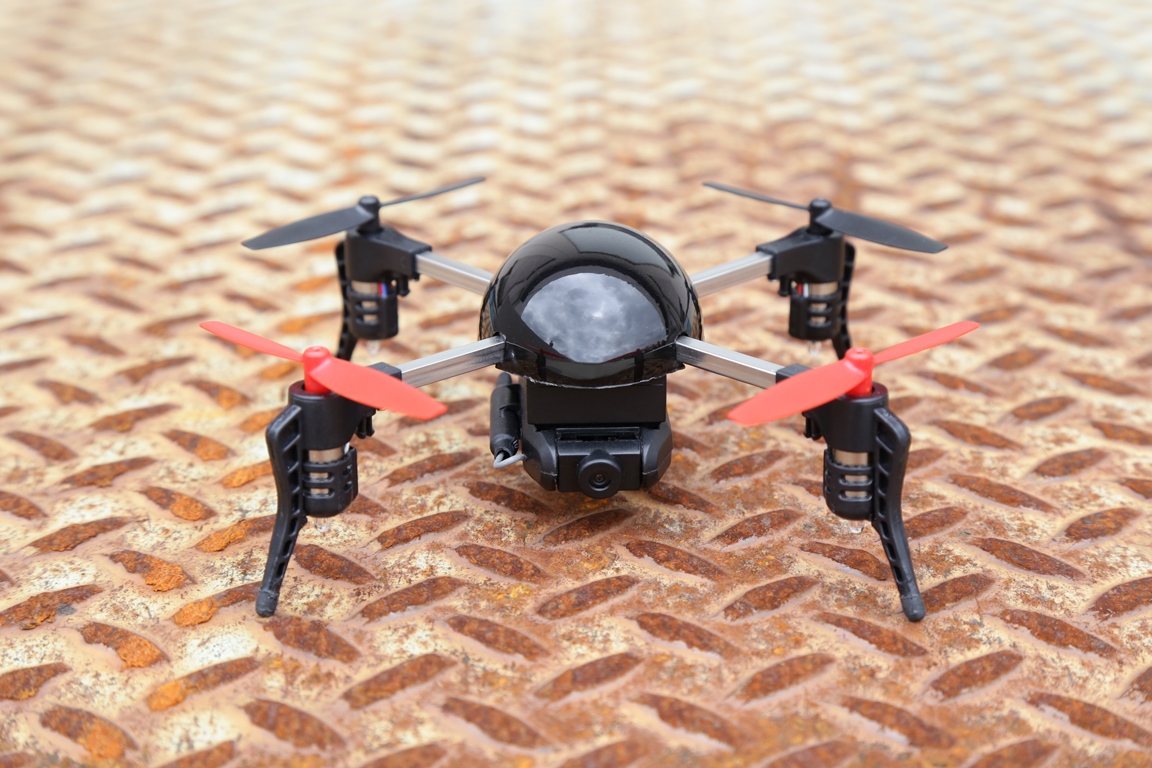
Small-form drones are in, and companies are scrambling to pump out their own pint-sized quadcopters while the trend is hot. Their struggle is exacerbated even more by the demand that the market has created for the inclusion of advanced technology, from HD video to intelligent flight modes and more. This all creates a balancing act for the manufacturers as they try to strike the right balance between more features, a smaller form, and a cheaper price.
UK startup Extreme Fliers thinks they found that balance with their Micro Drone 3.0, which is the third iteration from the company and their most popular product to date. The company launched an Indiegogo crowdfunding campaign in June of 2015 and within four months raised $3.6 million from 35,373 backers. The premise for their Micro Drone 3.0 was a drone targeting everyone from first-timers to seasoned pilots, in the same compact platform with a simplistic design. But does this approach really work in the consumer drone market?
Why go small?

Most small-form drones (with the exception of the DJI Mavic) are much cheaper than their full-scale counterparts. Often the features are pared down in order to save cost, the batteries are smaller, and the materials used may be cheaper to manufacture. In the case of the Micro Drone 3.0 kit, the quadcopter, gimbal, transmitter, and Google Cardboard VR headset is $215. While there are cheaper drones out there, Extreme Fliers believes that they found zeroed in on the right combination of features and low cost at the micro drone level (the replacement batteries are only $16 each!) that results in a product you could give to a child without worrying about mishaps.
The Micro Drone 3.0 is stated by Extreme Fliers to be the “drone for everyone,” with a simple design and approachable platform. This is a “pick up and go” product without much complexity out of the box, and makes for a good kid-friendly gadget. If you dig a little deeper though, you will find a few things that help to keep this product from going stale, like inverted flying capabilities and video streaming.
The other benefit of mini drones is their flexibility with flight areas. You probably wouldn’t take a full-sized drone up in a suburban yard (and definitely shouldn’t launch one in your home), but the Micro Drone 3.0 flourishes in this type of setting. Of course, if you do decide to fly any drone indoors you should exercise extreme caution, and use propeller guards. No matter how small or inconspicuous the propellers seem, keep in mind these are spinning quickly and can cause injury if not properly handled.
Micro drone, macro aspirations
The Micro Drone 3.0 comes with a few integrated features beyond the “simple” flight capabilities that make things interesting. The auto-leveling functionality makes the small drone surprisingly capable of clean takeoffs/landings, and balances itself pretty quickly after returning the stick to neutral ground. There is a switch marked “invert” which is used to pair with a special set of props for inverted trick flying. This could be enabled to achieve a momentary flip or sustained upside down flight for an extended period of time.
Extreme Fliers claims that the sensor-assisted flight can handle 45mph winds, while still hovering and allowing the device to fly in straight lines. While I didn’t clock the speed myself it can fly in wind, although I did experience a fair amount of drifting in-flight during stronger gusts. The 45mph top speed in “insane” mode is noticeably faster than operation in standard “fast” or “slow” mode.
One thing to note is that this drone doesn’t have GPS positioning, so dead-stick hovering in place is not possible. The drone itself has a range of 394ft with the transmitter, and only 50ft with the app used as a controller, and I tended to lean more heavily on the 2.4GHz frequency than the Wi-Fi app control. With regards to the flight time, you won’t be able to get too far on the 550mAh battery since the max is eight minutes without any accessories, but hot-swappable batteries can be charged pretty quickly and replaced in seconds. You won’t have much flight time, but again the design is catering towards short-range flight.
Video
The Micro Drone’s battery has a magnetic surface which allows a 1280×720 camera gimbal to record at 30fps, with 120° FOV either forward or backward-facing, depending on the placement. I had my mobile phone tuned into the video feed while the transmitter was used to control movement, which can be recorded to the Micro SD card onboard or stored in the app.
The Android/iOS app is also the central location where still photos can be captured, camera settings adjusted, and tutorial videos can be viewed. There isn’t a way to access this control from the transmitter itself, so all imaging functions are managed through the app, including video editing.
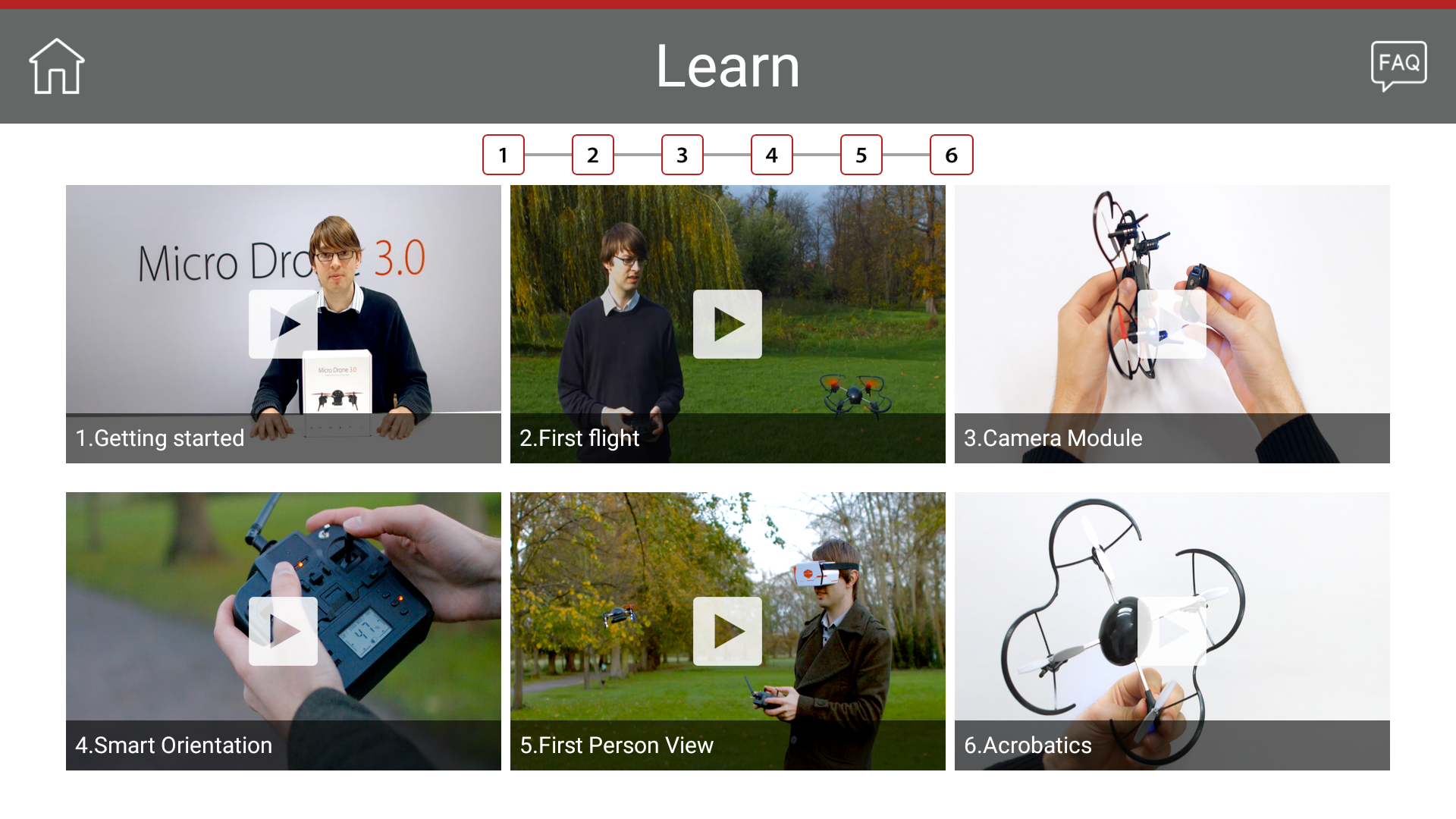
Design

The modular design of the 5.7”x2” mini-quad means that anything on the drone can be replaced with nothing more than a small screwdriver and a few moments, which keeps things simple. Most of the parts can actually be replaced by either snapping or sliding them together, while still maintaining strength. The cost for replacement parts is minimal, and despite the small size the drone was able to withstand a surprising amount of damage as a result of a few collisions with cement and steel structures (oops, our bad).
One area I would like to see more attention paid to would be the battery connection. It is a 3-pin connection, with some raised edges that hold it in place when slid together. While everything stays relatively put in a crash, the battery almost always pops off, and the pins have a chance of getting bent. Again the replacement parts are inexpensive, however because of this I think the cost could come down a bit to be more in line with the kid-friendly audience and be a bigger win.
The transmitter itself is pretty simple, and while the construction is basic I still prefer it far more than app control. Something about the digital joysticks, the lack of physical feedback, and a lack of acute control just doesn’t vibe with me when flying drones, so I stick to the hard controls.
The modular design of the drone continues with the customization of the body itself, and Extreme Fliers has 3D-printed designs for custom body styles from wasps to sharks and ogres.
As of the time this article was published, the carbon fiber racing kit for the Micro Drone 3.0 is on the precipice of launching, which includes (in addition to a carbon fiber frame) a 5.8GHz analog camera for low-latency FPV flight, and an upgraded power control board (PCB- essentially the CPU of the drone).
Buy the Micro Drone 3.0 on Newegg – $215
What the Micro Drone 3.0 is not
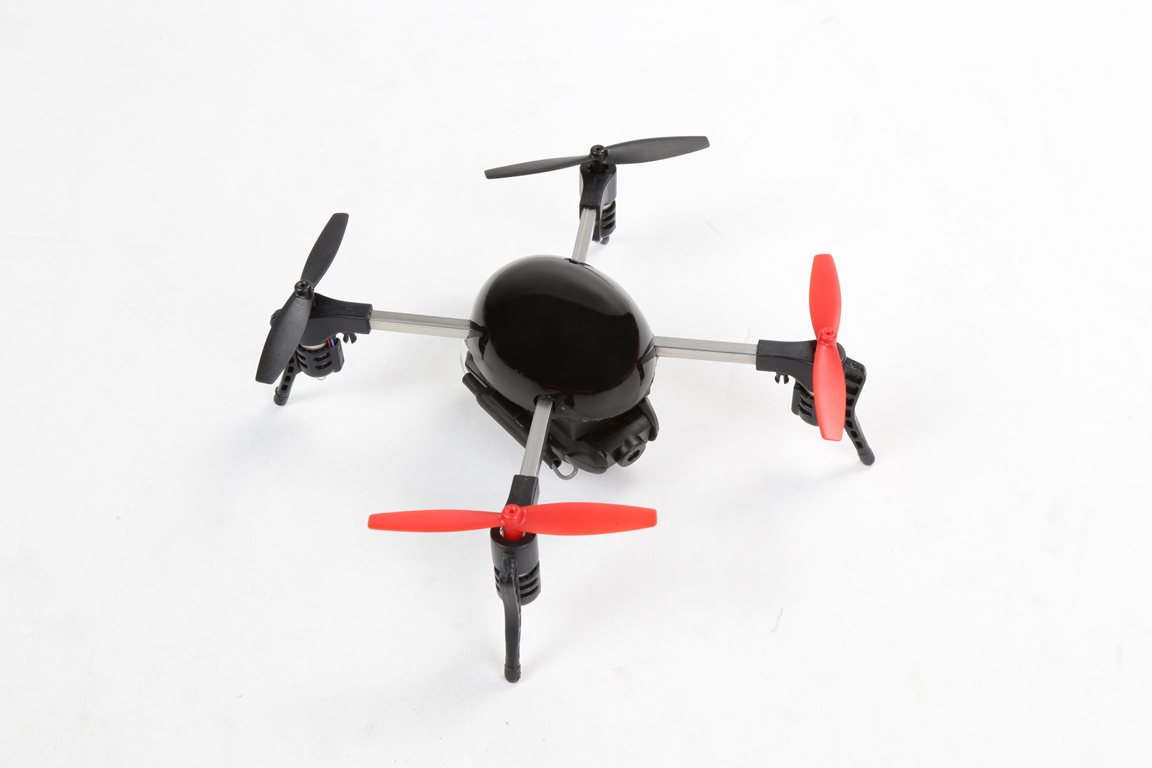
While the main focus of the drone is on a fun, compact unit that is something kids can have fun with; this drone has some clear distinctions of what it is not. This isn’t something that could be considered a photography drone, although it does have photo/video capabilities. The standard version of this currently available isn’t a racing drone (although for a small device it can really move), and this is not going to be something you can pilot very far.
What the Micro Drone 3.0 is, however, is a fun quick trip to the park or playing in the backyard with a couple batteries for a half hour, for some entertaining fly time. This is a reasonably durable, safe drone that I would feel comfortable letting a kid play with. It doesn’t pose a huge threat if control is lost, and the relative low-investment gives younger ones the fun of learning the drone ropes and exercising control. I can see this being a cool drone to whip out at a BBQ and do some trick flying, and with enough battery packs a neat mini-quad to keep around as an interesting conversation starter. With its compact form factor, the streamlined layout of this drone makes for an interesting product we could see even more of in the future as drones continue to rise in popularity.
Featured in this article
Extreme Fliers Micro Drone 3.0 kit- $215

